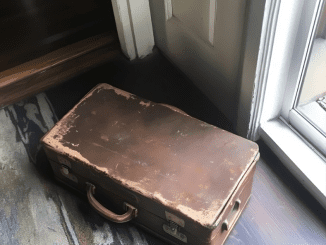Let’s be real—most of us don’t think about our liver until something goes wrong. But the truth is, your liver is a silent warrior, working 24/7 to filter toxins, metabolize nutrients, and keep your entire body in balance. When it starts to fail, the signs aren’t always dramatic. In fact, they’re often subtle—and dangerously easy to ignore.
So, how do you know if your liver’s in trouble?
Let’s break down 17 critical symptoms that may signal your liver is crying out for help—and what you can do about it before it’s too late.
The Silent Role of Your Liver

Think of your liver as your body’s built-in detox engine. It filters everything—food, alcohol, medication, even environmental toxins. It also plays a key role in metabolism, hormone balance, and immune function. When it’s working, you feel energized and balanced. But when it’s not? Things go south fast.
The scariest part? Liver disease can creep in without a single loud symptom—until it’s serious.
1. Persistent Fatigue That Won’t Go Away
Feeling drained even after a full night’s sleep? That tiredness could be a result of your liver struggling to filter waste, leaving your blood full of toxins and your body sluggish.
2. Unexplained Weight Gain or Loss
Rapid weight gain or sudden loss—especially around your abdomen—could be a red flag. The liver plays a key role in metabolizing fats. If it’s failing, fat storage can go haywire.
3. Yellowing Skin or Eyes (Jaundice)
This is one of the most visible signs. Jaundice occurs when bilirubin (a waste product) builds up in your bloodstream. If your skin or the whites of your eyes start turning yellow, see a doctor immediately.
4. Dark Urine (Even If You’re Hydrated)
If your pee is darker than usual despite drinking enough water, your liver might not be filtering bilirubin properly. It’s a clear sign something’s off.
Video : Is Your Liver Dying? 17 Critical Symptoms You Must Know! | Healthy Care
5. Pale or Chalky Stools
Healthy stools should be brown. If they’re gray, pale, or clay-colored, it could be a sign your liver isn’t producing enough bile.
6. Frequent Nausea or Vomiting
A failing liver can cause persistent nausea due to toxin buildup or digestive disruption. If it keeps happening, don’t ignore it.
7. Abdominal Swelling or Pain (Especially on the Right Side)
A swollen abdomen or discomfort near your upper right side could indicate liver inflammation or fluid retention (ascites)—both signs of advanced liver trouble.
8. Itchy Skin With No Clear Cause
Liver dysfunction can cause bile salts to build up under your skin, triggering relentless itching. If you’re scratching with no rash in sight, your liver may be the culprit.
9. Swollen Legs and Ankles
Fluid retention in the legs and ankles may result from a failing liver struggling to regulate fluid and protein levels in your bloodstream.
10. Frequent Bruising or Bleeding
If you bruise easily or bleed longer than normal after minor cuts, it might be due to reduced production of clotting factors by your liver.

11. Loss of Appetite
A damaged liver can affect digestion and appetite. If you’re skipping meals because you’re just not hungry, especially over several days, take note.
12. Bad Breath or a Metallic Taste
Your mouth might be trying to tell you what your liver can’t. A sour or metallic taste could be from ammonia buildup in your blood—a major red flag.
13. Mental Fog, Confusion, or Trouble Focusing
When the liver can’t filter toxins, they may reach your brain, causing what’s known as hepatic encephalopathy. If you’re forgetting things, feeling confused, or struggling with basic focus, your liver might be involved.
14. Changes in Sleep Patterns
Insomnia or excessive daytime sleepiness might seem harmless—but when paired with other symptoms, they could point to liver dysfunction and cognitive impact.
15. Red Palms or Spider Veins
Chronic liver issues often affect circulation and hormones, causing spider angiomas (small, spider-like blood vessels) or red palms (palmar erythema).
16. Hormonal Imbalance in Men and Women
In men, liver disease can lead to enlarged breasts (gynecomastia) and reduced libido. In women, it may cause irregular menstrual cycles. These changes are due to hormonal disruption caused by a sluggish liver.

17. A Bloated or “Hard” Belly
If your belly feels tight or looks distended, especially with mild discomfort, it could be more than overeating. It might be a liver issue like ascites, which requires urgent medical attention.
When to Take Action
These symptoms might seem mild on their own. But together? They paint a serious picture.
If you’re noticing more than 2 or 3 of these signs, don’t wait. The liver is incredibly resilient, but once it’s pushed too far, damage can be irreversible. The earlier you catch the warning signs, the better your chance of recovery.
How to Support Your Liver Starting Today
You don’t need to wait for symptoms to take action. Here are a few natural, proactive ways to keep your liver happy and healthy:
- Drink plenty of water – hydration supports liver detoxification
- Eat liver-friendly foods – garlic, beets, leafy greens, and turmeric
- Limit alcohol and processed foods – they place stress on your liver
- Move your body – exercise improves blood flow and reduces fat buildup in the liver
- Get regular checkups – especially if you have a family history of liver issues
Final Thoughts: Don’t Wait for a Breakdown to Pay Attention
Your liver won’t send a push notification when it’s in trouble. It whispers first—through your skin, sleep, digestion, and mood. The question is: are you listening?
Video : Drinking 1 Glass of THIS Fixes Fatty Liver in 2 WEEKS!
These 17 symptoms aren’t random. They’re your body’s way of waving a red flag before it’s too late. So if you’re experiencing any of them, consider it your cue to start caring more, investigating further, and making liver health a daily priority.
Because when your liver works better, so do you.
💬 Have you noticed any of these symptoms? Drop a comment and let’s talk about liver health—you might help someone else spot the signs too.


